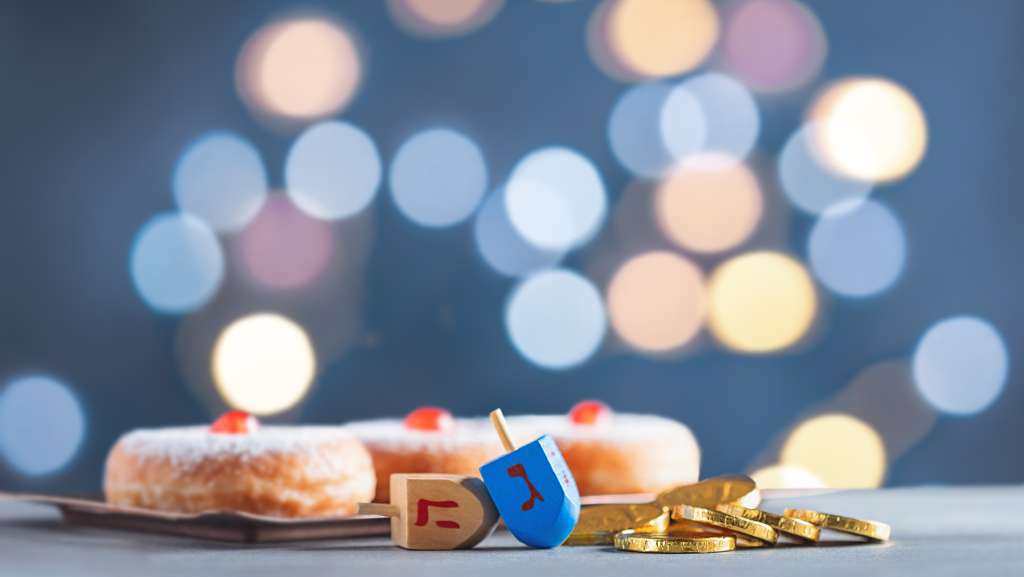
Stay Environmentally-Mindful This Holiday Season With These Top Tips (Pt1)
It might be getting closer to "the most wonderful time of the year" but the festive period can also be a time of increased waste. In the first instalment of her two-part blog, IAATO's Communications and Environment Assistant (and Antarctic Ambassador) Hayley Fier shares her thoughts on how to be more mindful this holiday season:
Ah, the holidays. That time of time of year spent with loved ones, giving thanks, enjoying festive and family traditions - and, whether you observe Christmas, Hannukah, Kwanzaa or Yule, potentially a time of excess and waste.
According to one widely cited statistic from the United States Environmental Protection Agency in 2016, Americans throw away 25% more household garbage between Thanksgiving and New Year's Day than we do during the rest of the year. I'm sure this number is even higher in 2023!
Similarly, Biffa, a waste and recycling firm based in the UK, sees a 40% increase in the amount of waste handled between Christmas and New Year's. In fact, so many carrots are thrown away there that Santa's nine reindeer could be fed one a day for 500,000 years!
With these uncomfortable numbers in mind, are you interested in reducing your waste this holiday season? If so, test these tips for being more mindful of the environmental impact of your decorations, traditions, and gifts!
Stick to their wish list.
We've all been there -- getting a gift that we didn't really need or want for the holidays. What's the big deal though? When you combine all the unwanted and returned gifts purchased each year, things add up! According to Jason Goldberg chief commerce strategy officer at Publicis and founder of RetailGeek.com, at least 25% of returns get destroyed. The best-case scenario for a return is that it gets recycled, but Goldberg claims that most of the items get sent straight to the landfill or even burned. That doesn't even consider the carbon footprint of online returns that your loved ones mail back to the retailer!
To avoid returns (or buying too many things that your family and friends don't need), try to stick to their wish list. Who knows, with any luck they'll stick to yours, too.
 Follow your loved one's wish list - they (and the environment) will thank you. Pictured: A notepad with the beginnings of a holiday wish list written on it.
Follow your loved one's wish list - they (and the environment) will thank you. Pictured: A notepad with the beginnings of a holiday wish list written on it.
Consider gifting experiences instead of material goods.
Is your dad glued to the couch every Sunday to watch his favorite football team? Instead of another jersey to add to his closet, consider buying tickets for you to go to a game together. Does your best friend love wine and art? Take them on a trip to a 'paint and sip' art studio.
If you want to make these experiences last all year, give your loved one a jar or box filled with vouchers for different activities to do together. The possibilities are endless! You could gift them a movie night of their choice, a beach day, an at-home spa day, or any other activity they might like to do with you.
Gifting experiences and memories are just as valuable as material goods (maybe even more than a physical present!).
Choose a real Christmas tree or a reusable one made from natural materials.
Getting a real tree for Christmas is a controversial subject. Buying a real tree requires a tree to be cut down, meaning it can no longer sequester carbon, for it only to be "used" for a couple of weeks. However, plastic trees require energy to produce, travel a long way to reach you, and do not break down easily in landfill.
According to Carbon Trust, the carbon cost of a real two-meter (six foot) tall tree with no roots is 16 kilograms of CO2 equivalent (CO2e) emissions in the landfill. If that tree is replanted or chipped into mulch, this number is reduced to 3.5 kg CO2e. Meanwhile, a plastic tree of the same height is said to release 40 kg of CO2. It would take at least 10 years of using a plastic tree before its emissions fell below that of a real tree. Plus, at the end of its life, the plastic tree is still leaching microplastic and toxic chemicals, such as polyvinyl chloride and polyethylene, into the environment, harming humans and ecosystems more broadly.
To reduce your tree’s carbon impact this year, make sure that you check in with your local waste management service. Do they have a Christmas tree mulching program? If so, when can they pick up your tree? Another option for having a real tree is to rent one! Potted trees are delivered to your home and picked up after the holidays. During the rest of the year, the tree continues its life (and sequesters more carbon) until it can be rented out again the following year. If you’re still not on board with a real Christmas tree, consider buying an artificial tree made from natural materials.
 Real Christmas trees (or reusable ones made from natural materials) lower your holiday waste. Pictured: Christmas trees awaiting festive shoppers.
Real Christmas trees (or reusable ones made from natural materials) lower your holiday waste. Pictured: Christmas trees awaiting festive shoppers.
Turn off your holiday lights at night. A study from the US Energy Department's Energy Information Administration found that decorative seasonal lights accounted for 6.6 billion kilowatt-hours annually in the United States alone. That's enough electricity to power more than 800,00 homes for a year!
Leaving outdoor holiday lights on overnight can be dangerous not only for your electric bill, but also for your local wildlife.
Light pollution can disorient migratory birds who rely on the moon and stars to navigate through the night sky. In their confusion, these birds are more likely to collide with buildings.
Squirrels may also be negatively impacted by holiday lights. One study found that holiday lights on Texas A&M University-Kingsville’s campus caused squirrels to continue foraging for four hours later than they normally did, leaving them exposed to nocturnal predators, like feral cats and owls. This increased the squirrels' mortality seven-fold.
Try turning outdoor lights off at the same time you turn your indoor lights off to go to sleep. Coupling these habits can help you remember to do it every night.
 Don't forget to switch off your festive lights at night. Pictured:A table at Hannukah with twinkling festive lights in the background and foiled gold coins, dreidel and baked treats in the foreground.
Don't forget to switch off your festive lights at night. Pictured:A table at Hannukah with twinkling festive lights in the background and foiled gold coins, dreidel and baked treats in the foreground.
Check out your candle's ingredients.
Candles are popular throughout the year, but especially in the winter when they set the tone for the holiday, whether you're lighting the menorah or the mishumaa saba.
However, some candles are better for the environment than others. Most candles are made of paraffin wax, which is derived from oil biproducts. Soy, coconut, or beeswax candles, on the other hand, are better for the environment, as they're derived from renewable resources.
Use up any paraffin candles you might have - they shouldn't go to waste - but then consider making the switch!
 Light candles made from renewable resources, like soy or beeswax candles, instead of oil-derived paraffin. Pictured: Kwanzaa "matunda ya kwanza" (first fruits) display.
Light candles made from renewable resources, like soy or beeswax candles, instead of oil-derived paraffin. Pictured: Kwanzaa "matunda ya kwanza" (first fruits) display.
What do you think of these tips? Are you going to use them to be mindful of your environmental impact this holiday season?
Keep us updated on Facebook or Instagram, and check back for the second instalment - coming soon!

About the Author – Hayley Fier
Hayley is a recent graduate of Stony Brook University’s School of Marine and Atmospheric Sciences where she completed her Master’s degree in Marine Conservation and Policy.
Before joining the International Association of Antarctica Tour Operators (IAATO) as an intern in January 2023, she spent her time interning at zoos and aquariums, learning about husbandry for animals in human care and educating the public about conservation.
As part of her role, Hayley works with IAATO's Antarctic Ambassadorship Committee to create content and resources to help create and support Antarctic Ambassadors around the world.


